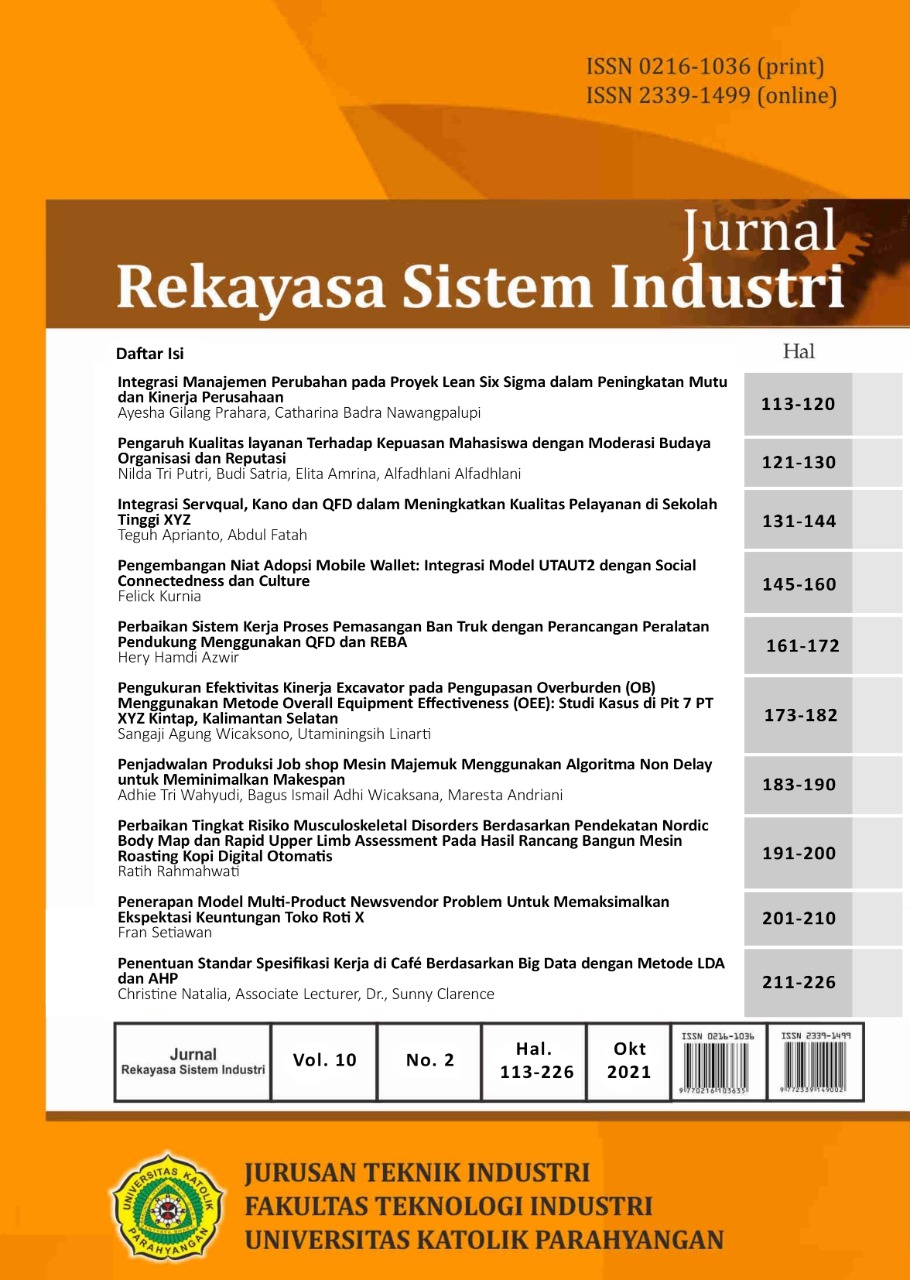Integrasi Manajemen Perubahan pada Proyek Lean Six Sigma dalam Peningkatan Mutu dan Kinerja Perusahaan
DOI:
https://doi.org/10.26593/jrsi.v10i2.4064.113-120Keywords:
change management, lean six sigma, defects, DMAIC, quality improvementAbstract
PT X is a small enterprise producing various types of jute fabric products. As a traditional business, the company still largely rely on the handiness and crafting skills from their workers. Whilst the business competition increases, PT X requires to strengthen the business by improving product quality in an efficient way. Besides high level of defects, PT X has also non-value-added activities in their production resulting in high overtime hours of their workers. Although PT X considers the overtime is acceptable to achieve the production target, there is room for improvement to reduce the defects as well as to shorten the production lead time. This paper aims to tackle the inefficiency and quality of the company. Lean six sigma is proposed to improve the condition and change management is implemented to ensure the commitment and participation of all staff for the success of change. Hence, this paper proposes the combination of change management and lean six sigma to improve production quality, lead time and staff participation. Combining DMAIC methods with change management, a methodology called DMA(C)IC is used with the middle C is for change. The implementation of the integration between change management in lean six sigma has resulted in the reduced number of defects and shorter lead time and the awareness of the workers to improve their working behavior.
References
Arneither, E.D., & Maleyeff, J. (2005). The Integration of Lean Management and Six Sigma. The TQM Magazine, 17(1), 5-8.
Gupta, P. (2011). Leading Innovation Change - The Kotter Way. International Journal of Innovation Science, 3, 141-149.
Hess, J. D., & Benjamin, B. A. (2015). Applying Lean Six Sigma within the University: Opportunities for Process Improvement and Cultural Change. International Journal of Lean Six Sigma, 6(3), 249-262.
Hudnurkar, M., Ambekar, S., & Bhattacharya, S. (2019). Empirical analysis of Six Sigma Project Capability Deficiency and Its Impact on Project Success. The TQM Journal, 31(3), 340-358.
Kotter, J.P. (1996). Leading Change. Boston: Harvard Business School Press.
Lertwattanapongchai, S. & Swierczek, F.W. (2016). Assesing the Change Process of Lean Six Sigma. International Journal of Lean Six Sigma, 5(4), 423-443.
Noori, B., & Latifi, M. (2018). Development of Six Sigma Methodology to Improve Grinding Processes: A Change Management Approach. International Journal of Lean Six Sigma, 9(1), 50-63.
Pepper, M., & Spedding, T. (2010). The Evolution of Lean Six Sigma. International Journal of Quality and Reliability Management, 27(2), 138-298.
Pyzdek, T. (2003). The Six Sigma Handbook Revised and Expanded. McGraw-Hill.
Robbins, S.P. (2001). Organizational Behaviour. New Jersey: Prentice Hall International.
Salah, S., Rahim, A., & Carretero, J, A. (2010). The Integration of Six Sigma and Lean Management. International Journal of Lean Six Sigma, 1(3), 249-274.

